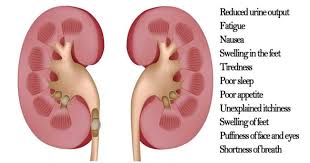What's in this article?
What is Kidney Cancer?
Kidney cancer is a disease in which kidney cells become malignant (cancerous) and grow out of control, forming a tumor. Almost all kidney cancers first appear in the lining of tiny tubes (tubules) in the kidney. This type of kidney cancer is called renal cell carcinoma. The good news is that most of kidney cancers are found before they spread (metastasize) to distant organs. And cancers caught early are easier to treat successfully. However, these tumors can grow to be quite large before they are detected.
The kidneys are two bean-shaped organs, each about the size of a fist. They lie in your lower abdomen on each side of your spine. Their main job is to clean your blood, removing waste products and making urine.
Doctors don’t know the causes of kidney cancer. But certain factors appear to increase the risk of getting kidney cancer. For example, kidney cancer occurs most often in people older than age 40.
Symptoms of Kidney Cancer
Most cases of kidney cancer don’t cause any symptoms in the early stages.
The most common symptoms of mid- to advanced-stage kidney cancer are:
- blood in your urine (haematuria) – the amount of blood is usually high enough to change the colour of your urine to a reddish or dark brown colour
- a persistent pain in your side, just below the ribs
- a lump or swelling in the area of your kidneys (on either side of the body)
However, in around half of all cases the cancer causes no symptoms and is only detected during a routine ultrasound scan.
Less common symptoms of kidney cancer include:
- extreme tiredness (fatigue) or anaemia
- unintentional weight loss
- a high temperature of 38C (100.4F) or above
- night sweats
- a general sense of feeling unwell
- swelling of the veins in the testicles (in men)
- loss of appetite
- high blood pressure (hypertension)
Risk factors for Kidney Cancer
Having these risk factors does not mean you will get kidney cancer. And it’s also true that you can have none of them and still get the disease.
Kidney Cancer Treatments
Surgery is the most common treatment for people with kidney cancer. The type of surgery depends on the size and stage of the cancer, whether you have two kidneys, and whether cancer was found in both kidneys.

You and your surgeon can talk about the types of surgery and which may be right for you:
- Removing all of the kidney (radical nephrectomy): The surgeon removes the entire kidney along with the adrenal gland and some tissue around the kidney. Some lymph nodes in the area may also be removed.
- Removing part of the kidney (partial nephrectomy): The surgeon removes only the part of the kidney that contains the tumor. People with a kidney tumor that is smaller than a tennis ball may choose this type of surgery.
There are two approaches for removing the kidney. The surgeon may remove the tumor by making a large incision into your body (open surgery). Or the surgeon may remove the tumor by making small incisions (laparoscopic surgery). The surgeon sees inside your abdomen with a thin, lighted tube (a laparoscope) placed inside a small incision. Sometimes a robot is used. The surgeon uses handles below a computer display to control the robot’s arms.
The surgeon may use other methods of destroying the cancer in the kidney. For people who have a tumor smaller than 4 centimeters and who can’t have surgery to remove part of the kidney because of other health problems, the surgeon may suggest:
- Cryosurgery: The surgeon inserts a tool through a small incision or directly through the skin into the tumor. The tool freezes and kills the kidney tumor.
- Radiofrequency ablation: The surgeon inserts a special probe directly through the skin or through a small incision into the tumor. The probe contains tiny electrodes that kill the kidney cancer cells with heat.
It takes time to heal after surgery, and the time needed to recover is different for each person. It’s common to feel weak or tired for a while.
Also, you may have pain or discomfort for the first few days. Medicine can help control your pain. Before surgery, you should discuss the plan for pain relief with your doctor or nurse. After surgery, your doctor can adjust the plan if you need more pain control.
Your health care team will watch you for signs of bleeding, infection, or other problems. They will keep track of how much fluid you take in and how much urine passes out of your body.
If one kidney is removed, the remaining kidney is usually able to do the work of both kidneys. However, if your remaining kidney isn’t doing a good job cleaning your blood, you may need dialysis. Some people may need a transplant with a healthy kidney from a donor.






Leave a Comment